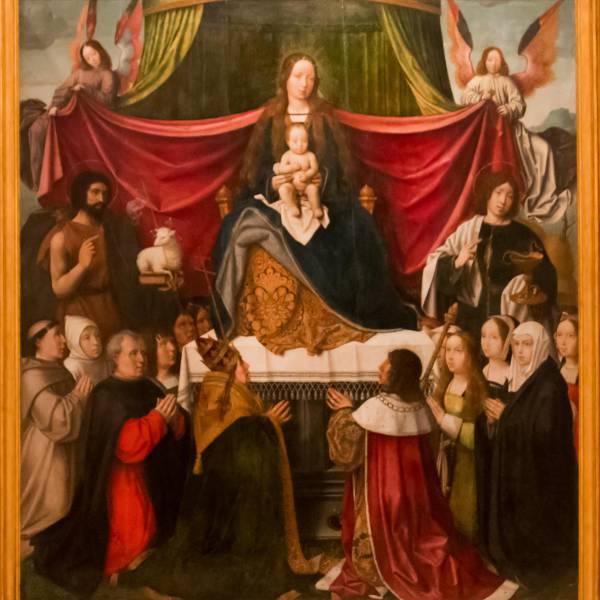In the aftermath of the Portuguese Liberal Wars, the country experienced political upheaval, leading to the expropriation or sale of private art collections from noble families. Notably, the painting collection of the former queen, Carlota Joaquina, was acquired by the Portuguese government and entrusted to the Academia in 1859. King Ferdinand II of Portugal, known for his appreciation of the arts, took an interest in the burgeoning organization. He secured royal sponsorship for the Academia (renamed Academia Real de Belas Artes) and made substantial financial contributions between 1865 and 1867, enabling the Galeria to establish an independent acquisition budget for purchasing artworks on the market.
In 1868, Francisco de Sousa Holstein, the son of the 1st Duke of Palmela and a vice-inspector of the Academia Real, spearheaded the renovation of the Galeria's exhibition spaces to accommodate the expanding collection. These refurbished rooms were opened to the general public, although the facilities remained inadequate due to high humidity, limited space, and the constant influx of visitors to the Academia. In 1875, a commission led by Sousa Holstein recommended the establishment of a larger and more permanent museum separate from the Academia's premises in Chiado.
Subsequently, in 1881, the educational division of the Academia was transformed into the Escola Real de Belas-Artes (Royal School of Fine Arts), while the Academia Real de Belas-Artes itself focused solely on cultural pursuits. In the same year, an Academia officer named Delfim Guedes rented the Palace of Janelas Verdes, a 17th-century palace formerly owned by the Counts of Alvor. The palace had changed hands several times over the years and was currently in private ownership. Guedes planned to utilize it temporarily as an exhibition space for an international art exhibition on Iberian ornamental art organized by the South Kensington Museum (now the Victoria & Albert Museum) in London, scheduled to visit Lisbon in 1882.
Lisbon.vip Recommends
The MNAA's collection spans more than a millennium of art, representing Europe, Asia, Africa, and the Americas. Visitors to the museum have the opportunity to admire notable works by renowned artists such as Hieronymus Bosch, Raphael, Hans Holbein the Elder, Francisco de Zurbarán, Albrecht Dürer, Domingos Sequeira, and Giambattista Tiepolo, among countless others. The diverse range of artistic expressions showcased within the museum's walls creates a captivating journey through time and culture.
Today, the National Museum of Ancient Art stands as a testament to Portugal's rich artistic heritage. Its vast collection, ranging from religious masterpieces to intricate decorative arts, offers visitors a profound appreciation of the evolution of art throughout history. With its commitment to preserving and showcasing artistic treasures, the MNAA continues to captivate audiences, fostering a deeper understanding and love for the arts among locals and international visitors alike.
Map View





